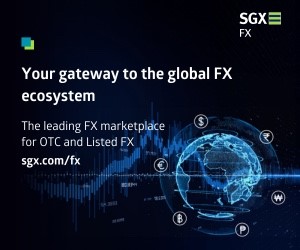The Last Look…
Posted by Colin Lambert. Last updated: February 12, 2024
How worried, or otherwise, should we be about buy-side adoption of the FX Global Code and how much more effort should the industry undertake to build it further?
Obviously buy-side engagement has been a big part of the Global FX Committee’s work over the past few years and from my perspective I am not sure, beyond perhaps being more proactive in getting the message out there, what more it could have done. A proportionality tool was introduced, and a committee established to demonstrate the benefits of adherence, and while the needle has moved, it has not gone far.
Should we be worried about the relatively slow progress, however? For one, this was always going to be a slow process, because a lot of firms on the buy-side do not prioritise FX and therefore any work required just slips further down the ‘to-do’ list; and second, the buy-side is still a minority player in FX.
In 2022, institutional investors, hedge funds and prop trading firms, and non-financial players averaged just under $1.8 trillion per day in FX turnover, just under a quarter of all volume. That’s a pretty large number, but then it’s a large market and banks – the largest segment to sign up to the Code – represent around 68% of daily volume.
Look at what we could call the contentious area of the FX market, however, spot and outrights (as a derivative of spot), and that influence grows. From 23% of activity, in spot and forwards, the three client groups represent 28.5% of volume – still a minority, but a growing one.
There has been a lot of attention on institutional investors in recent years, as this segment clearly felt most aggrieved at the conduct-related events of the early 2010’s, but as I have mentioned before, there is one segment that seems to ignore the Code – hedge funds. In the 2022 BIS Survey on turnover, hedge funds and prop trading firms were responsible for 10.6% of spot business, so in excess of $220 billion per day. This is an influential segment that nothing seems to be done about.
I can understand to a large extent why hedge funds are left on their own – their approach (and yes, this is a sweeping generalisation and outliers exist) is often ruthless as they take whatever edge they can. For decades, a lot of the worse behaviour from a LP perspective has come from the hedge fund sector. Full only you? Unlikely, but they still say it. Machine gunning LPs? A regular event. Spreading stop losses around? Proven practice.
There has been a lot of attention on institutional investors in recent years, but as I have mentioned before, there is one market segment that seems to ignore the Code – hedge funds
It could be argued that in the institutional space, the top end of town is now broadly covered by the Code. A quick glance at the GFXC’s Global Index of adhering firms shows there are 87 asset managers – yes, there are some double-ups, as there are in the banking space, but this is actually a good number and includes most of the major asset managers out there that engage proactively in FX. Throw in the 20-odd pension funds and that is, I would argue, good coverage.
There are 30 corporate treasuries, again with double-ups, but aside from a select group that trade very professionally, the vast majority of corporates are hedging according to a spreadsheet and have no real need of the Code. I accept there are some large corporates that trade in an aggressive fashion who are missing from the Global Index – but it was never claimed the Code would be all-encompassing, it is voluntary after all.
On the hedge fund side of the industry? Tumbleweed. There are probably 18-20 non-bank LPs signed up and looking through the Index I can find four out of the 1300 signatories that I would class as a hedge fund, and even they are overlay managers who trade differently.
I sense that when it comes to the institutional investor world, there is decent engagement – taking responses to the GFXC 2023 survey on the Code as a proxy for engagement, the second most engaged group was asset managers, after, naturally, banks. Beyond that, the corporates, as noted, are largely off-scope, but did actually engage with the feedback exercise; hedge funds are almost literally nowhere.
Just four respondents who identify as a hedge fund had a crack at the survey out of 333, that 1.2% representation is significantly lower than the 10.6% of spot volume the segment represents. On the asset manager side, 12.3% of respondents is largely in line with the segment’s FX market influence.
I wonder, therefore, if we are not barking up the wrong tree by continuing to focus on the asset manager segment? There will always be gaps in coverage – and as I have stated before, a buy side firm that does not sign up to, and adhere to, the Code, can have little complaint if their LPs occasionally operate in what some might see as a grey area. You have to be sat at the table to have a say.
Of course, hedge funds probably don’t care that much, and they see the cost of adherence as an unnecessary one, but it would be good to at least know why these firms don’t want to engage.
I do not always agree with how the GFXC goes about its business, but I recognise that in the area of buy side engagement, it is probably doing as much as it can, except for, perhaps, with the hedge funds. It could be the committee has tried and been rebuffed – that’s fair enough, but it would be insightful to know – for then, pressure can be exerted from outside including, possibly, regulators.
The GFXC’s work from here on in is to deepen engagement with existing buy side adherents, rather than worry about getting stragglers on board
Overall though, while I believe that more should be done on last look and pre-hedging, I accept that, for example, FX settlement risk is currently a bigger issue and should be the focus of attention. That will not always be the case, however, and I do think it notable that the first two issues mentioned there are the only ones that move the needle when it comes to behaviour that is seen by some as less than ethical.
It would be very interesting to know how those who believe last look and pre-hedging needs more work and incorporating into the Code identify. If they are largely buy-side then the GFXC has an issue because the majority of respondents – the banks – don’t really want to see that change, but the group we purport to serve, the clients, want things done differently.
And this is why we do need to ensure that buy side engagement is maintained – to better understand what these customers are most worried about. I dare say few are going to pull the plug on a relationship because of the odd last look glitch (pre-hedging could be a different matter), but the very fact that they are concerned about behaviour should be a warning sign.
Looking forward, therefore, it seems to me that the GFXC’s work from here on in – with the Code still fit for purpose in the main – is to deepen engagement with existing buy side adherents, rather than worry about getting stragglers on board. I sense that, with a few exceptions, if a buy-side firm hasn’t signed up now and is not undertaking the process, it never will do. It makes sense, therefore, to pull back on efforts to grow adherence by numbers, and focus instead on deeper engagement, in greater detail, with a segment that is already engaged. The FX Global Code is a vital part of the market’s fabric, perhaps we need to ensure that those that are engaged remain so – for they are the biggest selling point for the document with their peers.



